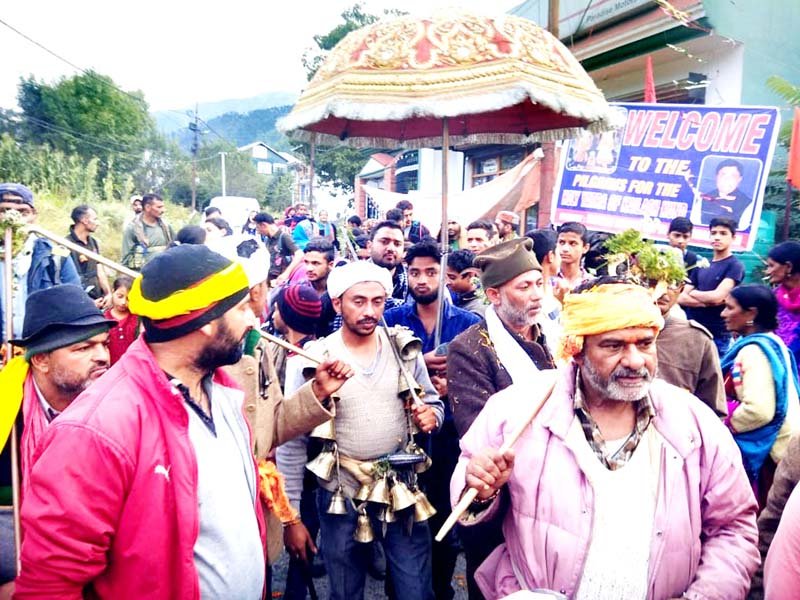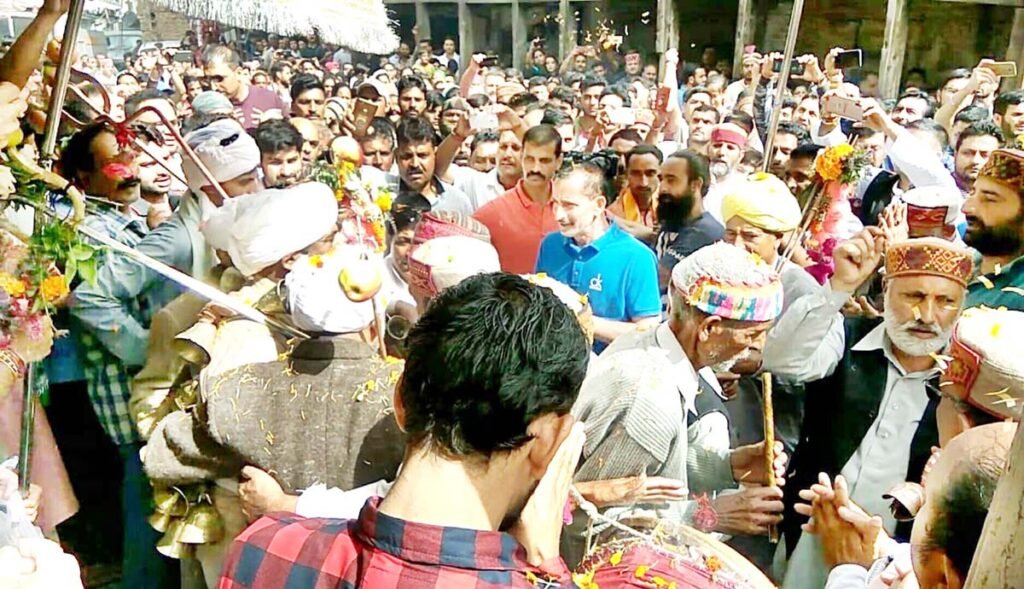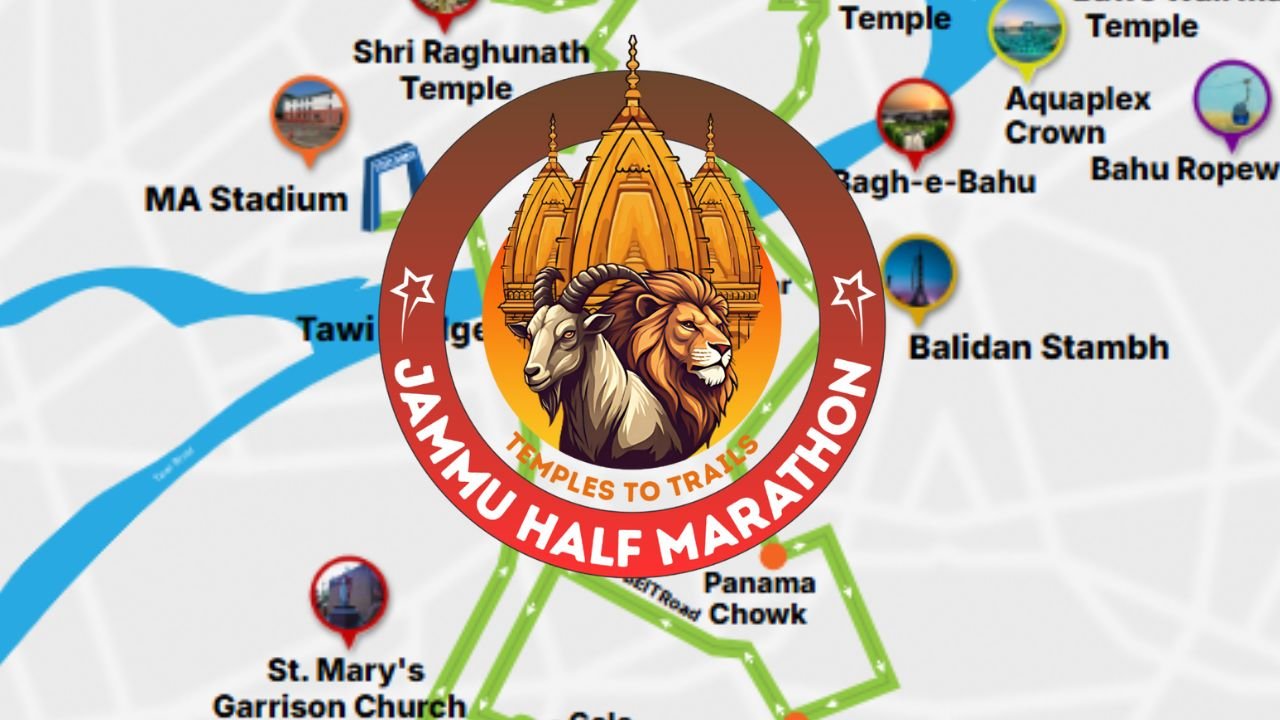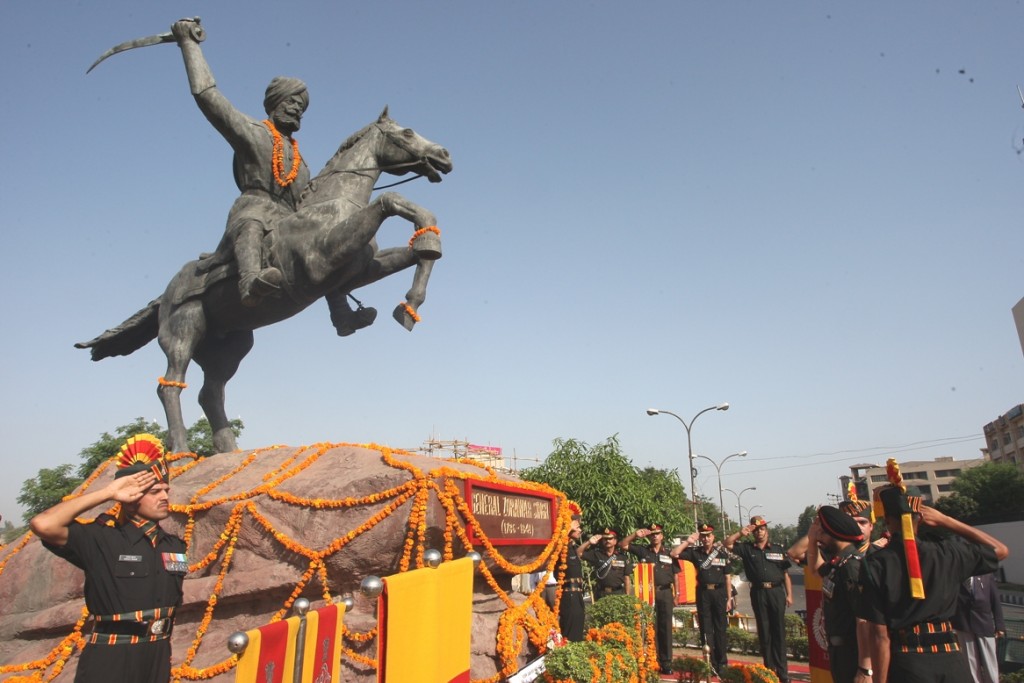The Kailash Kund Bhaderwah is more than a pilgrimage; it is a transformative journey that takes devotees away from the material world into the heart of spirituality. This sacred journey, steeped in tradition and devotion, originates in the picturesque Bhaderwah Valley, renowned for its lush meadows, dense alpine forests, towering mountains, and tranquil ultramarine lakes atop the Seoj Dhar Range.
The Beauty and Significance of Kailash Kund Bhaderwah
Kailash Kund, a glacier-fed alpine lake, is accessible only during the late summer months. The lake emerges as a jewel of nature when the monsoon’s warmth melts the surrounding glaciers. However, as the monsoon retreats, the lake is once again cloaked in snow for the next eight months. The natural beauty of the region, coupled with its spiritual significance, makes this pilgrimage a profoundly enriching experience.
The Naga Cult, with its presiding deity Vasuki Nagaraja, holds this lake in reverence. This ancient cult, prevalent in the Middle Himalayas, closely intertwines with the Shaivite traditions of the Kashmir Valley, adding layers of cultural and spiritual depth to the pilgrimage.
Kailash Kund Yatra: A Spiritual Journey in Bhaderwah
The Kailash Kund Yatra, organized by the Directorate of Tourism, Jammu in collaboration with District Administration Doda, begins every year in the month of Bhadu on Dwadshi Tethi in Krishan Paksh that is in ending dates of august or early days of September from village Gatha in Bhaderwah. This annual pilgrimage occurs during the month of Bhadu, starting on Dwadshi Tethi in Krishan Paksh, typically in late August or early September.
This pilgrimage is considered as one of the toughest as pilgrims have to trek 21 kilometers of steep Kailash mountains range to reach the holy Kund (Lake). The yatra commemorates the spiritual journey of Sh. Vasuki Naag Ji Maharaj, who took this path to Kailash Kund, a sacred lake at an altitude of 14,241 feet. This serene and icy freshwater lake, surrounded by mountains and glaciers, is revered as a holy spot where Lord Shiva once resided before Sh. Vasuki Naag Ji became its guardian deity.
Read also: All About Shri Machail Mata Yatra: A Divine Pilgrimage in the Heart of Kishtwar
Pilgrims follow a traditional route marked by rituals, starting with the worship of the holy mace at Gatha. The journey begins with the beating of drums, blowing of flutes, and the chanting of religious slogans. Along the way, devotees traverse steep terrains, including the rocky strip known as “Gow Paeda”, named for its association with Sh. Vasuki Naag Ji’s transformation into a cow to maintain peace.
The yatra holds immense spiritual significance, being recognized as the biggest pilgrimage of Northern India, as mentioned in Vasuki Puran. Devotees believe taking a dip in the icy waters of Kailash Kund and offering donations to the poor at this sacred site brings divine blessings and spiritual fulfillment.

The holy mace returns to Gatha village after the ceremonial dip in Kailash Kund, completing the yatra. Women are traditionally not permitted to enter the inner sanctum of the Vasuki Naag Ji Maharaj temple at Gatha, reflecting the unique customs of the region.
The Kailash Kund Yatra is a profound spiritual experience blending devotion, tradition, and the natural beauty of Bhaderwah.
Key Highlights of Kailash Kund Yatra Bhaderwah Activities
The Kailash Kund Yatra is more than a pilgrimage—it is a vibrant cultural celebration that includes several unique and traditional activities. Below are the main highlights:
1. Shobha Yatra (Grand Procession)
The yatra commences with a Shobha Yatra, a grand and colorful procession where devotees carry sacred objects and idols of deities. This event symbolizes the unity and devotion of the pilgrims and sets the tone for the spiritual journey.
2. Procession Through the Valley
The procession moves through the scenic landscapes of Bhaderwah, showcasing the area’s natural beauty. Devotees chant hymns and prayers, creating an atmosphere of divine energy and communal harmony.
3. Local Folk Dance
The yatra also highlights the region’s rich cultural heritage through local folk dances performed by the locals. These traditional dances, characterized by vibrant costumes and rhythmic movements, add a festive flair to the pilgrimage.
4. ‘Chela’ (Mystic Man)
An intriguing aspect of the Kailash Kund Yatra is the participation of the ‘Chela’, or Mystic Man. These individuals, believed to have spiritual powers, play a significant role in the yatra by guiding the pilgrims and performing traditional rituals.
5. Traditional Music and Dress
The journey is further enriched with traditional music and attire. Devotees and performers don cultural outfits, while local musicians play age-old tunes on traditional instruments, enhancing the spiritual and festive ambiance.
Read also: Register for Shri Mata Vaishno Devi Yatra at Katra Railway Station: A Step-by-Step Guide
Journey to Bhaderwah: The Base Camp
The journey begins along the scenic Batote-Doda Road, skirting the mighty Chenab River, which has been transformed into a serene lake by the Baghliar Dam. Upon reaching Bhaderwah, pilgrims are greeted with warm hospitality by locals who are deeply connected to the annual yatra. The Vasuki Nag Temple serves as the spiritual and physical starting point of the pilgrimage.

Simultaneously, other routes to Kailash Kund commence from Bhalessa, Bani-Sarthal, Dudu-Basantgarh, and Chamba in Himachal Pradesh. These converging paths underscore the communal and historical importance of the yatra.
Chattergala: Gateway to the Kailash Kund
For those pressed for time, the Chattergala Pass offers an alternative route. This mountain pass, carved through dense coniferous forests, provides breathtaking views of the Seoj Dhar and Soan Bain mountains. The journey through these forests is so mesmerizing that it once reminded former Prime Minister Indira Gandhi of Germany’s Black Forest.
Chattergala, a saddle-shaped pass, marks the transition from the Bhaderwah Valley to the Sarthal area. Here, the trek to Kailash Kund begins. Pilgrims are welcomed by blooming mountain meadows, dotted with wildflowers in vibrant hues of yellow and white. The buzzing of honeybees amidst this natural bounty creates a sense of harmony and urgency, reflecting the fleeting beauty of late summer.
The Trek: A Test of Faith and Endurance
The trek from Chattergala to Kailash Kund is both arduous and rewarding. The ascent offers panoramic views of Bhaderwah Valley, framed by dense forests and mist-laden mountains. Arrow markings on boulders, painted by the army, ensure that pilgrims stay on the right path.
Along the way, trekkers encounter nomadic huts, deep gullies carved by melting snow, and challenging gradients. The journey, though difficult, is made manageable by a well-trodden hiking track created over centuries of pilgrimages. Each ascent and descent brings a sense of relief and achievement.
Read also: All You Need To Know About Jhiri Mela: A tribute to honest farmer
As the altitude increases, the landscape transforms into rocky fields dotted with moss-covered boulders. The final ascent tests every pilgrim’s stamina, with the thin air at 14,000 feet adding to the challenge. Despite the physical toll, the nearness to the holy lake and unwavering faith drive pilgrims to persevere.
The Sacred Kailash Kund Lake
Reaching the Kailash Kund Lake is a moment of unparalleled spiritual and emotional fulfillment. Nestled amidst permanent snowfields, the lake and its smaller counterparts form a surreal sight. Pilgrims must descend into what appears to be a crater to witness the pristine azure waters.

A ritual dip in the icy waters of the lake serves as a symbolic act of cleansing one’s sins. Despite the freezing temperatures, the deep faith and devotion of pilgrims sustain them. For many, this act is a profound reminder of the transience of material life and the eternal nature of the divine.
Hospitality and Respite
Pilgrims are offered hot tea and food at the site, courtesy of the Sahastra Seema Bal (SSB) personnel or local community-run langars. This warm hospitality provides a much-needed respite after the strenuous journey. The accomplishment of completing the yatra leaves a lasting sense of spiritual elevation and inner peace.
How to reach Kailash Kund Bhaderwah
The nearest airport is Jammu, which is 224 KMs away.
The nearest convenient railway station is Udhampur, which is 155 KMs away.
The nearest major city is Bhaderwah, which is 36KMs away.
Read also: Decoding the mystery of Baba Buddha Amarnath in Poonch
A Word of Caution for Outsiders
The Kailash Kund Yatra is not for the faint-hearted. Outsiders, unaccustomed to the rugged lifestyle of mountain folk, are advised to proceed with caution and avoid competing with the hardy locals. The yatra demands physical endurance, mental resilience, and unwavering faith.
The Kailash Kund Yatra is more than a trek; it is a journey of self-discovery, faith, and devotion. From the scenic beauty of the Bhaderwah Valley to the spiritual sanctity of the glacier-fed lake, every aspect of the yatra leaves an indelible mark on the pilgrim’s soul. This ancient pilgrimage continues to unite communities and inspire a deep connection with the divine, making it a cherished tradition for generations.
















